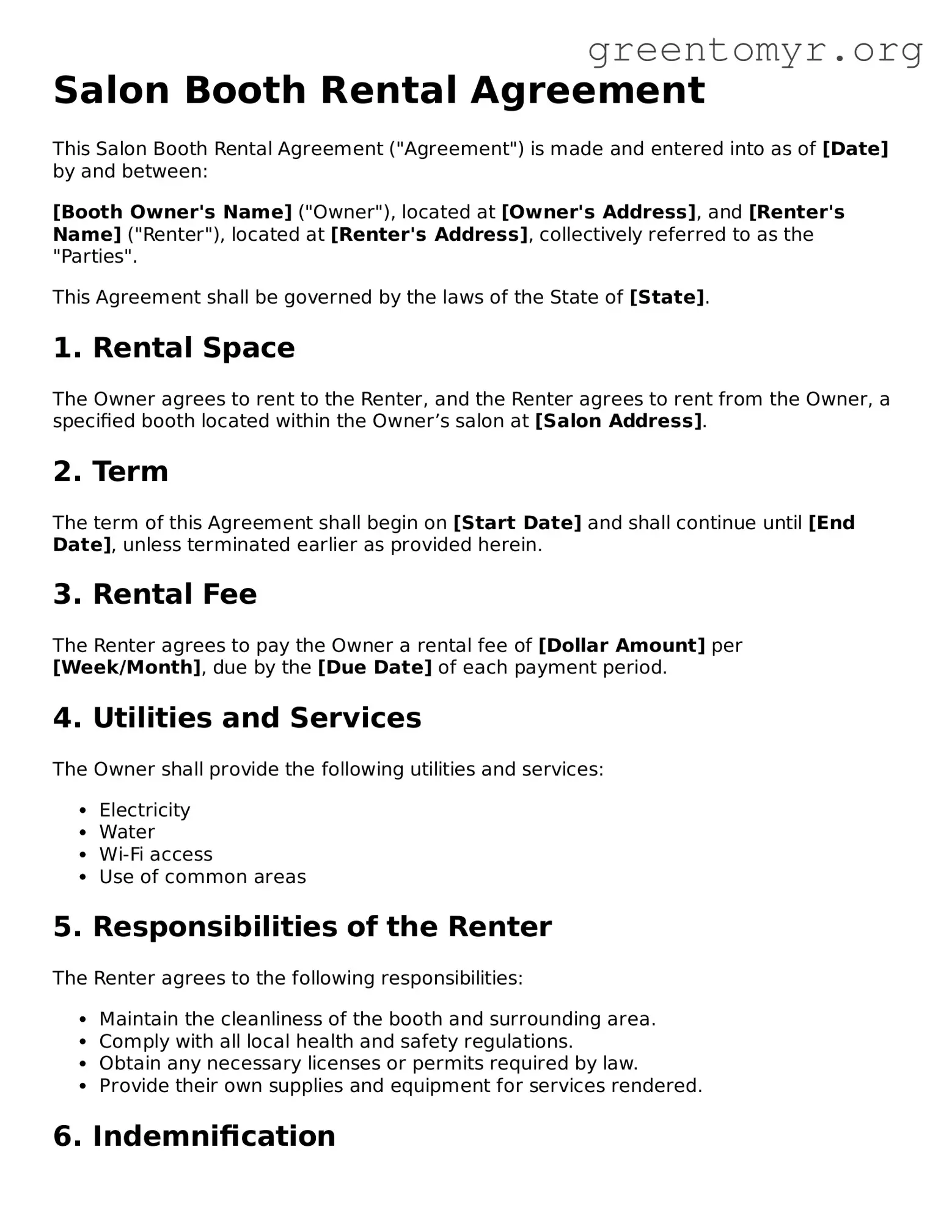Salon Booth Rental Agreement
This Salon Booth Rental Agreement ("Agreement") is made and entered into as of [Date] by and between:
[Booth Owner's Name] ("Owner"), located at [Owner's Address], and [Renter's Name] ("Renter"), located at [Renter's Address], collectively referred to as the "Parties".
This Agreement shall be governed by the laws of the State of [State].
1. Rental Space
The Owner agrees to rent to the Renter, and the Renter agrees to rent from the Owner, a specified booth located within the Owner’s salon at [Salon Address].
2. Term
The term of this Agreement shall begin on [Start Date] and shall continue until [End Date], unless terminated earlier as provided herein.
3. Rental Fee
The Renter agrees to pay the Owner a rental fee of [Dollar Amount] per [Week/Month], due by the [Due Date] of each payment period.
4. Utilities and Services
The Owner shall provide the following utilities and services:
- Electricity
- Water
- Wi-Fi access
- Use of common areas
5. Responsibilities of the Renter
The Renter agrees to the following responsibilities:
- Maintain the cleanliness of the booth and surrounding area.
- Comply with all local health and safety regulations.
- Obtain any necessary licenses or permits required by law.
- Provide their own supplies and equipment for services rendered.
6. Indemnification
The Renter hereby agrees to indemnify and hold harmless the Owner from any claims, liabilities, or damages arising out of the Renter's use of the rented booth.
7. Termination
Either party may terminate this Agreement with [Number of Days] written notice for any reason. Upon termination, the Renter shall vacate the premises and return all keys, property, or equipment belonging to the Owner.
8. Governing Law
This Agreement shall be interpreted under the laws of the State of [State].
9. Entire Agreement
This Agreement constitutes the entire agreement between the Parties and supersedes any prior agreements or understandings.
IN WITNESS WHEREOF, the Parties have executed this Agreement as of the date first above written.
Owner's Signature: ____________________ Date: ______________
Renter's Signature: ____________________ Date: ______________
Contact Information:
Owner's Phone: [Owner's Phone]
Renter's Phone: [Renter's Phone]
